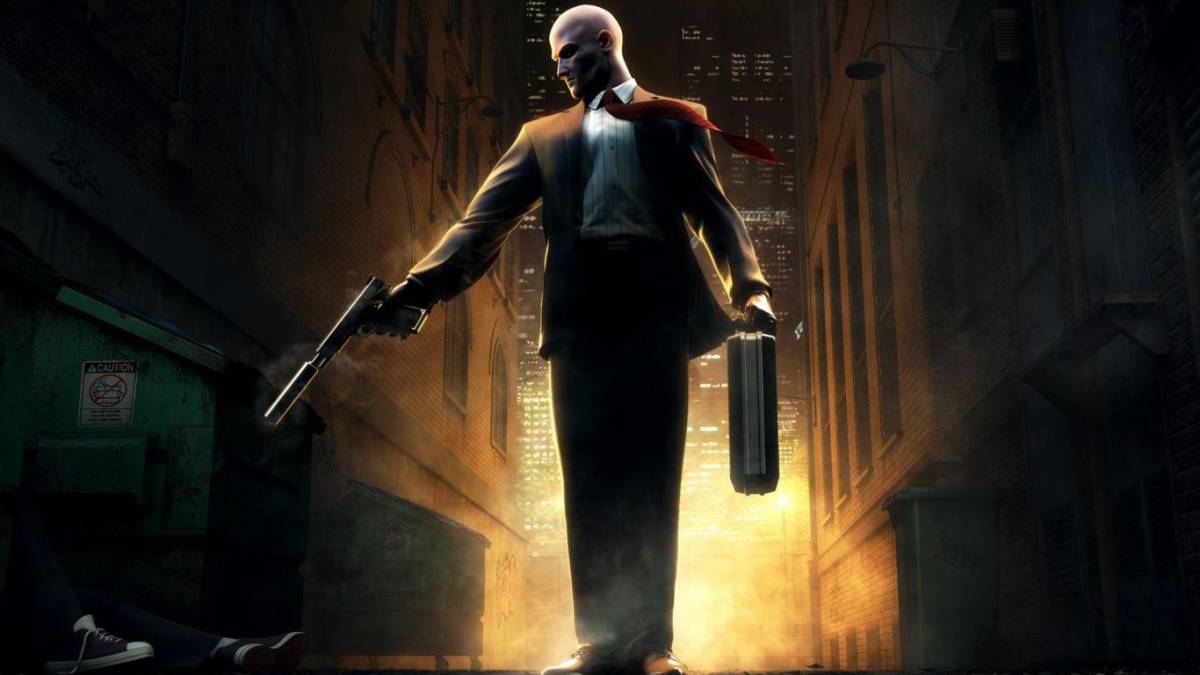It’s been a long and crazy 20 years for the greatest assassin in the world. Since 2000, the Hitman series starring the genetically enhanced killer, Agent 47, has spawned more than a dozen games and two big-budget Hollywood popcorn flicks, and with the recent success of Hitman 3, the franchise doesn’t seem to be slowing down one bit.
Don’t know much about the shadowy exploits of the barcode-tattooed killer? Don’t worry, he’s a master at hiding in plain sight, which is why we’ve de-classified this guide to the history of Hitman.
Doom in a Black Suit and Burgundy Tie (Hitman: Codename 47)
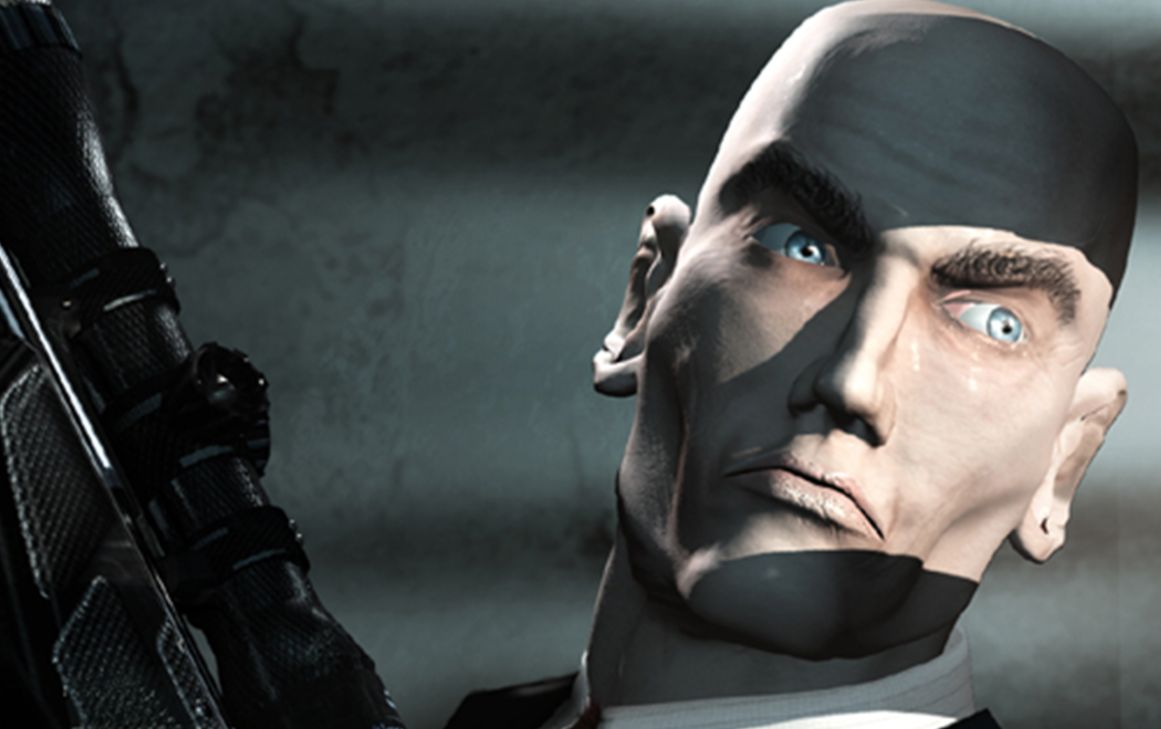
IO Interactive’s Hitman: Codename 47 dropped in 2000, introducing the world to the permanently grave-faced killer who would go on to become one of the most recognizable assassins in video games (ironic considering his whole shtick is being able to blend into crowds).
If anything, Hitman: Codename 47 is evidence of just how far a great gimmick can take you. Thief and Metal Gear Solid had proven that there was an audience for stealth-focused action games, but while those releases had you sneaking from shadow to shadow out of fear of being spotted, Hitman: Codename 47 let you hide in plain sight by donning different disguises either procured in situ or stolen off the back of an unlucky NPC.
Codename 47 is one of the few Hitman titles that really dives into Agent 47’s past. It’s messy, convoluted, and at times nonsensical, but still offers an interesting look into the mind of the man behind the Silverballers.
The game opens with Agent 47 awakening in a sanatorium room with padded walls. Through loudspeakers, he hears a mysterious voice that offers guidance through the training course just outside of the room. After mastering the course and killing a guard, 47 makes his escape.
A year later, Agent 47, now a professional hitman for the ICA (International Contract Agency), is sent on a globetrotting campaign to take out four powerful targets. He soon discovers the four men he’s killed were contributors to an underground project to genetically engineer the perfect killer: Agent 47. And the man behind the contracts? Dr. Ort-Meyer, the mastermind behind 47’s creation and the final genetic contributor to the project, who, in a fit of greed and jealousy, had his compatriots killed in order to have 47 all to himself.
And so begins 47’s journey to track down and kill the man who made him.
Codename 47 received middling reviews from critics who disliked the clunky controls and awkward camera. And despite the game’s bold stealth-oriented gameplay, Codename 47 still had the odd run-and-gun stage that felt underdeveloped and out of place.
Yet, despite its flaws, Hitman: Codename 47’s distinctive brand of subterfuge and slaughter struck a chord with players, and the game sold well enough to justify a sequel that would fix many of the original’s issues.
Silverballin’ (Hitman 2: Silent Assassin)
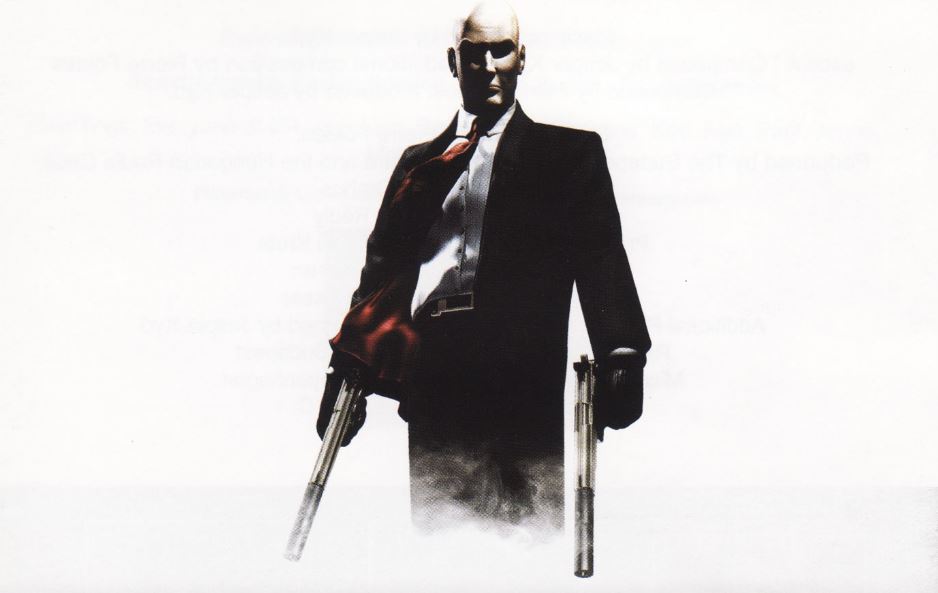
Released in 2002, Hitman 2: Silent Assassin featured bigger levels, smarter AI, and a greater focus on the sandbox gameplay that the original featured only some of the time. The sequel also set 47’s peculiar test tube history off to the side, allowing players to spend more time plotting brand-new methods of murder and less time scratching their heads over the barcoded anti-hero’s undercooked origin story. Without a clumsy narrative to get in the way, the newly-refined gameplay took center stage.
After viciously murdering the five men that made him in his debut game, Agent 47 decided to leave his contract killer days behind for the peaceful, inconspicuous life of a church gardener. But when the head of his church is kidnapped and held for a $500,000 ransom, 47 (who definitely can’t afford to pay that much with a gardener’s wages) is forced to turn to the ICA for aid. They promise to help him if 47 will complete a few contracts for them in exchange, dragging him back into the world of violence he thought he’d left behind.
While Codename 47 felt almost like a successful but flawed proof of concept, Silent Assassin is the game where Hitman truly found its identity. Gone were the awkward and punishing run-and-gun stages that ruined the first game’s pacing. Instead, the sequel doubled down on the sandbox puzzler spirit of fan favorite stages from the original, giving players larger environments to explore with near-absolute freedom.
The open-ended mission structure, intelligent (for its time) AI, and all the new tools and weapons introduced in Silent Assassin came together to create one of the most satisfying experiences in the murder simulator series. The bigger stages and greater sense of freedom were a hit with critics and helped make it the highest-rated game in the franchise on Metacritic. Sales numbers showed the fans were loving it, too, and it was the best-selling Hitman game for more than a decade before 2016’s soft reboot overtook it.
The Clip Show (Hitman: Contracts)

Following Silent Assassin’s massive success both critically and sales-wise, Eidos purchased IO Interactive in 2004. The first Hitman game to release under new management was 2004’s Hitman: Contracts.
Expectations for Contracts were high, with fans hoping for a new Hitman experience bigger and better than Silent Assassin. What we got instead was a greatest hits compilation of favorite levels from previous games with overhauled visuals and revamped controls.
Agent 47 is shot and nearly killed while on a job in Paris. As he stumbles back to his hotel room, he thinks back on the contracts he’s completed, giving players the opportunity to replay classic missions from previous games.
As 47 is getting patched up in his hotel room, the Groupe d’Intervention de la Gendarmerie Nationale (GIGN) force their way in, and he’s forced to make his escape before the doctor can completely dress his wound. It’s at this point he remembers the man who shot him and the target on his contract, Albert Fournier, was once a corrupt member of the GIGN. With his memory restored, Agent 47 sets out to finish the job he started.
Although it’s bookended by two better games in Silent Assassin and Blood Money, Contracts isn’t without its merits. It’s the first game in the series to implement a circular inventory system, which made swapping between weapons and tools much easier than the clunky menu system from previous games and the controls felt sharper and more responsive than ever.
While Contracts was a solid offering in the series and the stage redesigns were well-received among fans, the lack of new content left many feeling IO had simply phoned it in for the third Hitman game. Additionally, some found it odd that the series was already getting what amounted to a “clip show episode” when it was only two games in at that point. Contracts received mixed reviews with a Metacritic aggregate score only two points higher than Codename 47 (which remains the lowest-scoring game in the franchise to date). The poor critical reception didn’t have a drastic effect on sales, though, and the game would still go on to sell more than 2 million copies by April of 2009.
The Height of the Hit (Hitman: Blood Money)
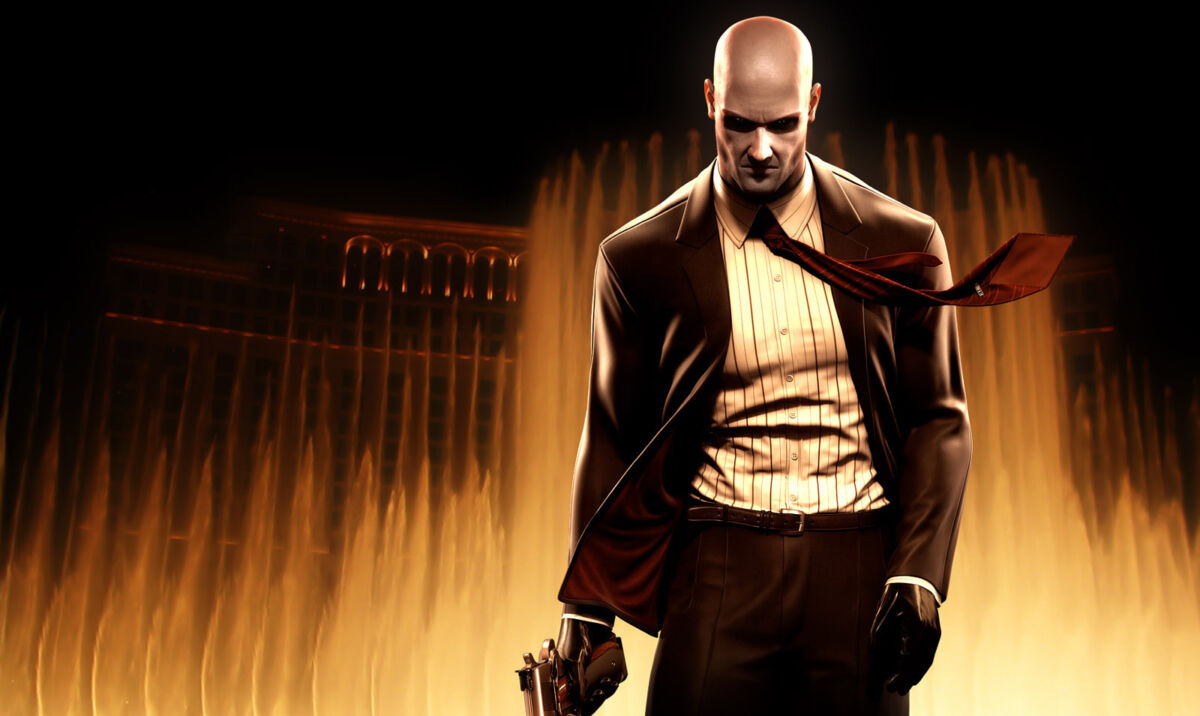
2006’s Hitman: Blood Money would prove to be a turning point for the franchise that saw Agent 47 break into mainstream awareness for the first time. It had slicker, more intuitive controls, huge, open levels, creative set pieces, and the smartest AI the series had seen to date.
Blood Money begins with former FBI director Jack Cayne revealing to journalist Rick Henderson the existence of a cloned super assassin. Although Rick doesn’t believe the rumors, he’s kind enough to allow Cayne the opportunity to convince him.
Cayne shows him a stack of classified documents that track a series of mysterious murders across the US, South America, and Europe. Among the documents is a file that shows that the ICA has been forced to shut down after targeted attacks from a rival organization known simply as the Franchise.
It’s a tale filled with intense drama that features crazy political plots, insane clone technology, and triple-crossing shenanigans. And it all comes to a close with a final mission theatrical and outrageous enough to make John Woo blush.
Beyond the major graphics update and revamped mechanics, Blood Money also introduced several features that opened up new paths for completing objectives. With proper setup, players could make their assassinations appear as unfortunately fatal “accidents,” a fun new mechanic that tied into the game’s “notoriety system” that ranked your performance in each stage based on how discreet you were in carrying out your jobs. And the AI was much more nuanced, now being able to spot blood spatter and follow blood trails.
Blood Money was a critical and financial success, selling more than 2.1 million copies in the year of its release. The game’s reputation has only grown over the years, and it’s now regarded as one of the greatest games of all time by video game publications and critics.
A New Direction and a New Handler (Hitman: Absolution)

After Blood Money did well, IO Interactive decided to take a break from the Hitman franchise to focus on new properties with a new design direction. The studio wanted to pivot away from the open-ended game design it was known for and make games that were more narrative-driven and cinematic.
Then in 2009, Japanese video game giant Square Enix purchased Hitman’s publisher Eidos Interactive, making IO Interactive, which Eidos had bought in 2004, a subsidiary of Square Enix.
Shortly after, the video game industry entered a period when it felt like almost any IP from the previous two decades was up for a gritty revival. Metroid had Other M, Devil May Cry had DmC, Thief had Thief (2014). This trend coincided perfectly with IO Interactive’s new cinematic direction to game-making, and the studio convinced their new publishers that it was time for Agent 47 to make his comeback, resulting in 2012’s Hitman: Absolution.
In Absolution, Agent 47 must kill his own handler, Diana, for allegedly betraying the ICA. When he tracks her down and confronts her, he learns that Diana has gone rogue to protect Victoria, a young girl the ICA is grooming to become an assassin. Always the immaculate professional, 47 shoots Diana before promising to continue her efforts to protect Victoria. In doing so, he is branded a traitor to the agency.
Despite the six year gap between games, comparisons with Hitman: Blood Money were unavoidable, and Absolution felt linear and constrictive in comparison. Instead of the large sandboxes that made Blood Money so fun to play again and again, many of Absolution’s levels were broken up into stages that funneled players through certain paths and hallways to the next section. Costumes and hostile NPC alert states didn’t carry through between sections, so players could break disguise, get into a loud and explosive firefight, then walk through a door into the next area like nothing had happened. Worst of all, the disguise system was changed so that anyone wearing the same outfit as 47 could immediately see through his disguise, effectively rendering the series’ defining mechanic entirely useless.
The more action-oriented direction was evident in new mechanics like “point shooting,” which allowed 47 to target multiple targets in slow motion and the new cover system, which helped 47 hide behind objects and peek around corners. 47 was also more adept at hand-to-hand combat than ever before, with melee combat playing out via quick time events.
Hitman: Absolution received mixed reviews from critics. Some praised Absolution’s polished presentation and tight gameplay. Many expressed dislike for the more directed and linear stage design and felt that IO Interactive had failed to understand the series’ core appeal.
Absolution failed to meet Square Enix’s performance expectations, despite selling 3.6 million copies in the year of its release.
Mobile Murder (Hitman Go, Hitman: Sniper)
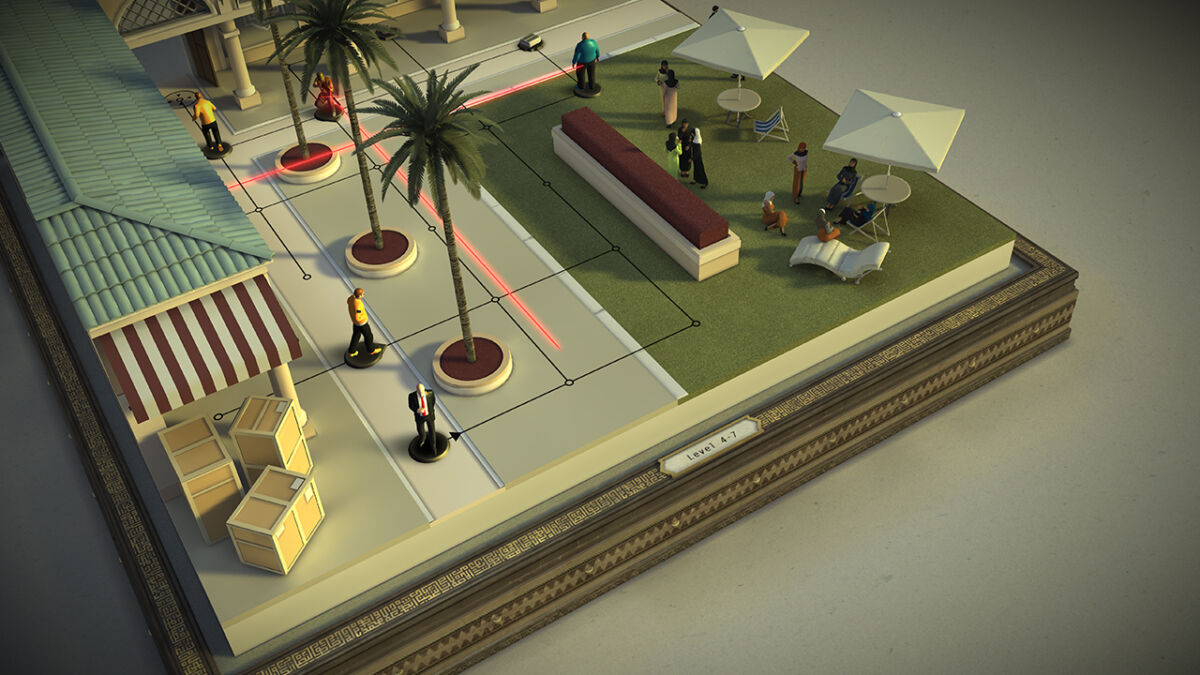
In Hitman Go, players must guide Agent 47 through a series of increasingly difficult grid-based puzzles. Assassination is still priority number one, even if 47 doesn’t have the disguises or tools he’s used to from the mainline titles, so the goal of each mission is to take out targets by moving onto the same block as them. New enemy types and mechanics are gradually introduced as you progress through the stages, adding to the difficulty and complexity of the puzzles.
Originally met with skepticism from the Hitman fanbase, Hitman Go’s simple controls and challenging puzzle designs eventually won over the hearts of critics and players upon release. It also offered a glimmer of hope that a comeback was on the horizon for Agent 47. After four years without a new game, the release of Hitman Go hinted that Square Enix wasn’t quite done with the franchise just yet.
Hitman: Absolution might not have been the grand slam that Square Enix were hoping for back in 2012, but one small part of the game that did prove to be hugely popular was the Sniper Challenge promotional minigame. In 2014, Square Enix announced they would be expanding the shooting gallery minigame into its own standalone title for mobile devices. Hitman: Sniper launched for Android and iOS in 2015 to generally favorable reviews.
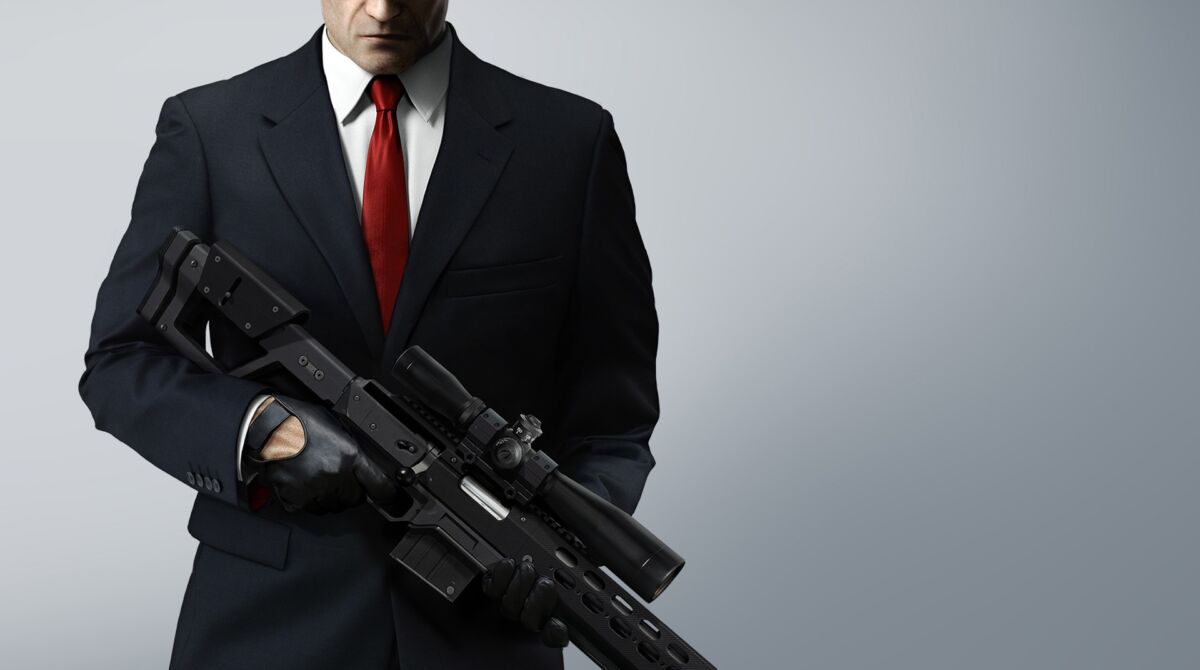
In Sniper, the player controls Agent 47 using a sniper scope display on their touchscreen device. 47 must spot and assassinate several powerful figures assembling at a lakeside hideaway without being discovered.
Critics lauded the game’s clever, minimalistic puzzle design, though some criticized the lack of variety in its scenarios.
Sniper would prove to be a big moneymaker for the small Canadian team that built it at Square Enix Montreal, and the money it earned funded the development of additional content and ports for Hitman Go.
Welcome to the World of Assassination (Hitman, Hitman 2, Hitman 3)
The 2016 installment, simply named Hitman, was the first of an arc of games publisher Square Enix was calling the World of Assassination. It marked a return to the open world gameplay that made Silent Assassin and Blood Money so enjoyable and also leveraged a few of the storytelling tricks the team had learned in developing Absolution.
The soft-reboot begins with a short prologue introducing Erich Soders, the Training Director at ICA. 20 years ago, when Agent 47 was undergoing initiation, Soders made an attempt to rig the process to prevent 47 from joining the ICA.
Now, 47’s former handler, Diana, has assumed a top role at the ICA and sends 47 on jobs that take him to exotic locales around the world. But in a callback to Codename 47, it turns out these contracts were all placed by the same mysterious “Shadow Client” as a series of planned attacks on a secret organization (yeah, another one) called Providence. By completing these contracts, 47 and ICA have unknowingly declared war on Providence.
While initial reactions to pre-release trailers were overwhelmingly positive, some fans were worried about the game’s episodic format. There were concerns that Square Enix were attempting to nickel and dime consumers by offering its latest Hitman game piecemeal.
Those concerns were aggravated with the release of the first episode. Critics felt the debut episode, set in the middle of a Paris fashion show, lacked polish and felt unrefined. However, critical opinion improved as more episodes dropped, and both critics and players would come to appreciate the slow-drip pace of its episodic releases.

The 2018 follow-up to the Hitman reboot, Hitman 2, isn’t so much a new installment as it is a new “season”, though it does refine some of the rough edges from the first game.
Continuing the plot of the last game, Agent 47 is hot on the heels of the mysterious Shadow Client who duped the ICA into attacking Providence. This time around, ICA and Providence have teamed up to uncover the identity of their common foe.
The gameplay experience is mostly identical to its predecessor, so don’t go into Hitman 2 expecting new tools, weapons, or overhauled mechanics. What it does offer, however, is six amazing new levels that are more consistently well-designed than the levels offered up in Hitman’s first season. And this time around, Hitman 2 drops the episodic format for a more traditional full release.
Hitman 2 was highly-rated by critics and sold well despite launching alongside big-name titles like Spyro Reignited Trilogy and Fallout 76, going on to become one of the highest-grossing games of 2018.
It’s worth nothing that you can play the entirety of Hitman in Hitman 2 by purchasing the first game’s levels as in-game DLC. You automatically get this DLC for free if you’ve previously purchased a copy of Hitman, meaning there’s no reason to buy a standalone copy of Hitman if you already own Hitman 2.

2021’s Hitman 3 rounds out the World of Assassination trilogy, bringing a close to the series’ deep dive into the professional killer’s obscure origins.
Agent 47 and Diana have gone rogue (again). Now they’re hunting down Providence leaders to bring an end to the organization for good.
The locations are all grand, beautiful, and wonderfully-designed, making Hitman 3 the greatest Hitman experience you can get to date. And the missions are creative and memorable; easily some of the most enjoyable to replay in the entire franchise.
Once again, Hitman 3 doesn’t make any big changes to the gameplay and direction of the previous two titles in the World of Assassination arc. However, you can download levels from previous World of Assassination titles, allowing players to enjoy the entire arc from within Hitman 3. You can purchase in-game DLC that allows their stages to be played through in Hitman 3, and if you own either game, the relevant DLC is instantly made available to you for free.
If you’re thinking getting into the World of Assassination arc, you can save some cash by purchasing Hitman 3 and getting the Hitman and Hitman 2 stage DLC.
Hitman 3 is currently tied with Silent Assassin as the highest-rated game in the franchise on Metacritic with a score of 87. It’s also been a huge financial success for IO Interactive and Square Enix, selling 300% better than Hitman 2 and making back its money in under a week.
READ NEXT: The Saucy History Of Saints Row
Some of the coverage you find on Cultured Vultures contains affiliate links, which provide us with small commissions based on purchases made from visiting our site.


